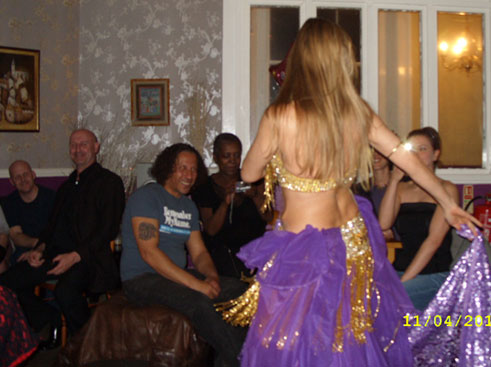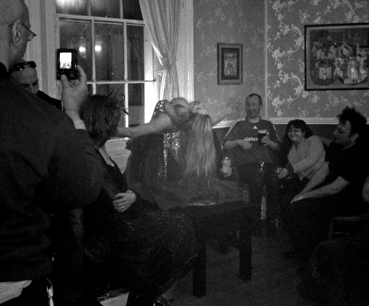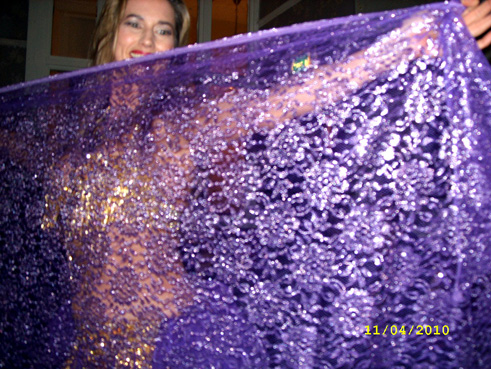Traditional Egyptian
Bellydance or "Raq Sharqii" is an art form that takes practice
and dedication to perform well. In its truest form, the dance should be
totally spontaneous, as the dancer improvises with the band – in
particular the tabla player (small drum played with the fingers).
Originally, belly dance was practiced by the women in harems to prepare for childbirth and to assist in toning everything up afterwards. The women performed for each other until inevitably men found out and took an interest!
 Different styles of
belly dancing can be found throughout North Africa – from Morocco,
Tunisia to Egypt and Lebanon, through to Persia and Turkey. It could
even be seen in India until the Victorians stamped it out because it was
“immoral”. The Indian dancers were called Nautch girls.
Different styles of
belly dancing can be found throughout North Africa – from Morocco,
Tunisia to Egypt and Lebanon, through to Persia and Turkey. It could
even be seen in India until the Victorians stamped it out because it was
“immoral”. The Indian dancers were called Nautch girls.
Many dancers were daughters of dancers and taught the dance from an early age. Some such as the Nautch girls were also courtesans. Contrary to modern belief, they were extremely well paid, educated and protected.
Some women began dancing for money. They would sew the coins onto their costumes to keep it safe. The more coins - the better the dancer. There is still a tradition in many Middle Eastern countries to have a belly dancer at weddings to bring luck to the bride and groom.
The two most common styles of belly dancing taught in England are Egyptian and Turkish. Modern Egyptian style often has complex choreography and is quite sharp in its movements. Turkish style is more free flowing and spontaneous and usually has a floor work section. Turkish dancers use zills (finger cymbals) throughout most of the dance. Egyptian dancers only use zills for part of the dance or not at all.

Many dancers today, fuse aspects of different belly dance styles. Certain Latin American and Spanish (Flamenco) moves mix in pleasantly too. Similarities can be found in the music, rhythms and instruments of Latin America due to the influence of the Moors in Southern Spain many centuries ago.
There are many traditional belly dance folk dances from different Middle Eastern Countries and gypsy dances from Turkey that tell a variety of stories. Costumes vary, ranging from completely covered up long dresses with head dress and scarf tied around the hips, to beaded bras and hip bands with bare midriff, flowing chiffon skirts and pantaloons.
For further info telephone 07961 382711 or email info@bellydanceaerobics.com
Website Copyright ©2010 Tina Shaw. All rights reserved.
It is not permitted to reproduce or distribute any part of this website or its contents without obtaining prior permission.
Failure to do this will result in prosecution









